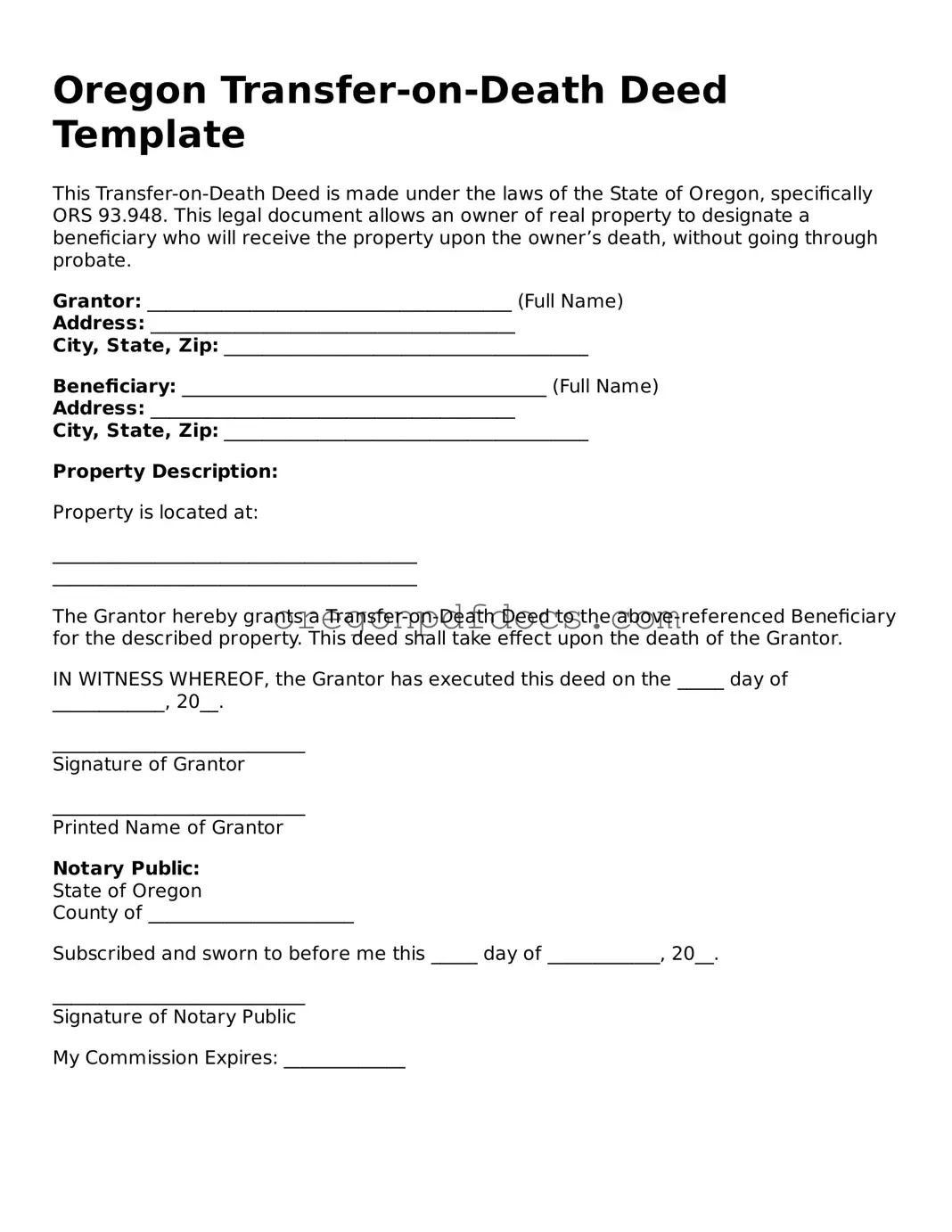Oregon Transfer-on-Death Deed Template
This Transfer-on-Death Deed is made under the laws of the State of Oregon, specifically ORS 93.948. This legal document allows an owner of real property to designate a beneficiary who will receive the property upon the owner’s death, without going through probate.
Grantor: _______________________________________ (Full Name)
Address: _______________________________________
City, State, Zip: _______________________________________
Beneficiary: _______________________________________ (Full Name)
Address: _______________________________________
City, State, Zip: _______________________________________
Property Description:
Property is located at:
_______________________________________
_______________________________________
The Grantor hereby grants a Transfer-on-Death Deed to the above-referenced Beneficiary for the described property. This deed shall take effect upon the death of the Grantor.
IN WITNESS WHEREOF, the Grantor has executed this deed on the _____ day of ____________, 20__.
___________________________
Signature of Grantor
___________________________
Printed Name of Grantor
Notary Public:
State of Oregon
County of ______________________
Subscribed and sworn to before me this _____ day of ____________, 20__.
___________________________
Signature of Notary Public
My Commission Expires: _____________
